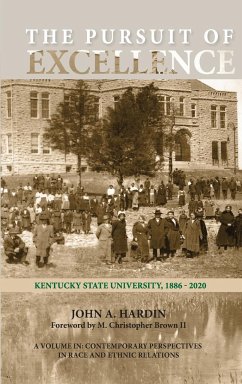
In Pursuit of the PhD

PAYBACK Punkte
26 °P sammeln!
What percentage of graduate students entering PhD programs in the arts and sciences at leading universities actually complete their studies? How do completion rates vary by field of study, scale of graduate program, and type of financial support provided to students? Has the increasing reliance on Teaching Assistantships affected completion rates and time-to-degree? How successful have national fellowship programs been in encouraging students to finish their studies in reasonably short periods of time? What have been the effects of curricular developments and shifts in the state of the job mar...
What percentage of graduate students entering PhD programs in the arts and sciences at leading universities actually complete their studies? How do completion rates vary by field of study, scale of graduate program, and type of financial support provided to students? Has the increasing reliance on Teaching Assistantships affected completion rates and time-to-degree? How successful have national fellowship programs been in encouraging students to finish their studies in reasonably short periods of time? What have been the effects of curricular developments and shifts in the state of the job market? How has the overall "system" of graduate education been affected by the expansion of the 1960s and the subsequent contraction in enrollments and degrees conferred? Is there "excess capacity" in the system at the present time? This major study seeks to answer fundamental questions of this kind. It is based on an exhaustive analysis of an unparalleled data set consisting of the experiences in graduate school of more than 35,000 students who entered programs in English, history, political science, economics, mathematics, and physics at ten leading universities between 1962 and 1986. In addition, new information has been obtained on the graduate student careers of more than 13,000 winners of prestigious national fellowships such as the Woodrow Wilson and the Danforth. It is the combination of these original data sets with other sources of national data that permits fresh insights into the processes and outcomes of graduate education. The authors conclude that opportunities to achieve significant improvements in the organization and functioning of graduate programs exist--especially in the humanities and related social sciences--and the final part of the book contains their policy recommendations. This will be the standard reference on graduate education for years to come, and it should be read and studied by everyone concerned with the future of graduate education in the United States. Originally published in 1992. The Princeton Legacy Library uses the latest print-on-demand technology to again make available previously out-of-print books from the distinguished backlist of Princeton University Press. These editions preserve the original texts of these important books while presenting them in durable paperback and hardcover editions. The goal of the Princeton Legacy Library is to vastly increase access to the rich scholarly heritage found in the thousands of books published by Princeton University Press since its founding in 1905.












